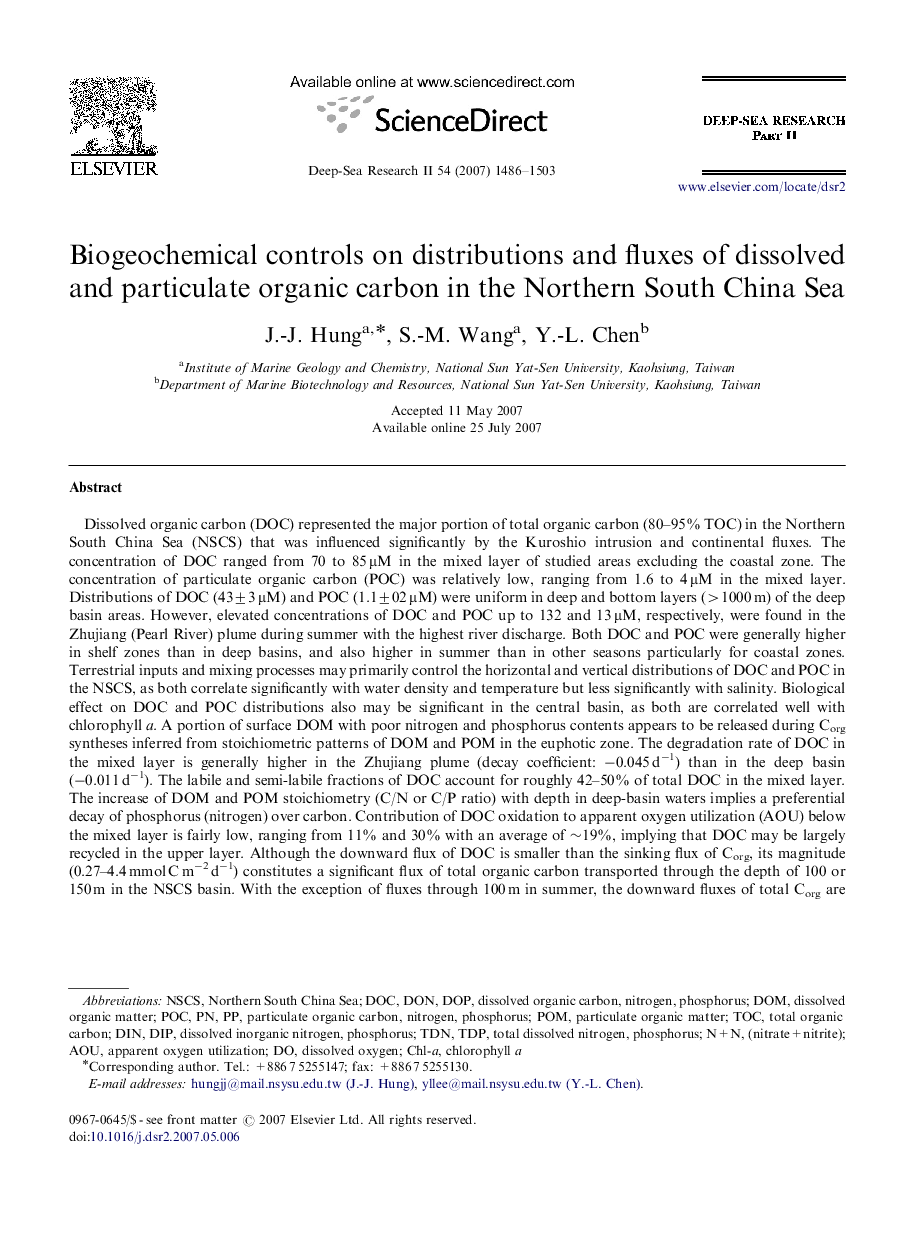| کد مقاله | کد نشریه | سال انتشار | مقاله انگلیسی | نسخه تمام متن |
|---|---|---|---|---|
| 4537751 | 1626504 | 2007 | 18 صفحه PDF | دانلود رایگان |

Dissolved organic carbon (DOC) represented the major portion of total organic carbon (80–95% TOC) in the Northern South China Sea (NSCS) that was influenced significantly by the Kuroshio intrusion and continental fluxes. The concentration of DOC ranged from 70 to 85 μM in the mixed layer of studied areas excluding the coastal zone. The concentration of particulate organic carbon (POC) was relatively low, ranging from 1.6 to 4 μM in the mixed layer. Distributions of DOC (43±3 μM) and POC (1.1±02 μM) were uniform in deep and bottom layers (>1000 m) of the deep basin areas. However, elevated concentrations of DOC and POC up to 132 and 13 μM, respectively, were found in the Zhujiang (Pearl River) plume during summer with the highest river discharge. Both DOC and POC were generally higher in shelf zones than in deep basins, and also higher in summer than in other seasons particularly for coastal zones. Terrestrial inputs and mixing processes may primarily control the horizontal and vertical distributions of DOC and POC in the NSCS, as both correlate significantly with water density and temperature but less significantly with salinity. Biological effect on DOC and POC distributions also may be significant in the central basin, as both are correlated well with chlorophyll a. A portion of surface DOM with poor nitrogen and phosphorus contents appears to be released during Corg syntheses inferred from stoichiometric patterns of DOM and POM in the euphotic zone. The degradation rate of DOC in the mixed layer is generally higher in the Zhujiang plume (decay coefficient: −0.045 d−1) than in the deep basin (−0.011 d−1). The labile and semi-labile fractions of DOC account for roughly 42–50% of total DOC in the mixed layer. The increase of DOM and POM stoichiometry (C/N or C/P ratio) with depth in deep-basin waters implies a preferential decay of phosphorus (nitrogen) over carbon. Contribution of DOC oxidation to apparent oxygen utilization (AOU) below the mixed layer is fairly low, ranging from 11% and 30% with an average of ∼19%, implying that DOC may be largely recycled in the upper layer. Although the downward flux of DOC is smaller than the sinking flux of Corg, its magnitude (0.27–4.4 mmol C m−2 d−1) constitutes a significant flux of total organic carbon transported through the depth of 100 or 150 m in the NSCS basin. With the exception of fluxes through 100 m in summer, the downward fluxes of total Corg are nearly balanced by new productivity derived from upward fluxes of nutrients by considering the estimate uncertainty. DOC appears to play an important role in organic carbon cycling and budgets in the upper layer of NSCS.
Journal: Deep Sea Research Part II: Topical Studies in Oceanography - Volume 54, Issues 14–15, July 2007, Pages 1486–1503